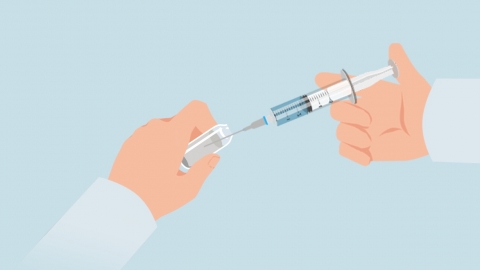What are the注意事项 after receiving a corticosteroid injection for tennis elbow?
Generally, after receiving a corticosteroid injection for tennis elbow, it is important to protect the injection site, control elbow movement, monitor local reactions, avoid premature loading, and follow-up requirements to ensure effective recovery and reduce complications. The details are as follows:

1. **Protect the injection site:** After the injection, press the injection site with a sterile cotton swab for 10–15 minutes to prevent bleeding or subcutaneous hematoma. Keep the injection site dry and clean for 24 hours—do not get it wet, rub, or squeeze it—to prevent bacterial invasion and infection.
2. **Control elbow activity:** Avoid excessive elbow movement in the short term after the procedure, especially actions that may aggravate tennis elbow, such as clenching fists, twisting towels, or lifting heavy objects. Try to keep the elbow relaxed and avoid repeated flexion, extension, or rotation, which could cause the medication to disperse too quickly (reducing effectiveness) or lead to further tissue damage.
3. **Monitor local reactions:** Pay attention to the response at and around the injection site. Mild soreness or numbness that gradually improves within a short time is considered normal. However, if significant redness, swelling, increased pain, fever, or fluid discharge occurs, this may indicate infection or an adverse reaction, and you should contact your doctor promptly.
4. **Avoid premature loading:** Do not place heavy loads on the elbow within one week after the injection—for example, lifting objects heavier than 1 kilogram or carrying heavy items. Premature loading increases stress on the elbow tendons, potentially reducing the effectiveness of the injection or worsening tendon damage, thereby delaying recovery.
5. **Follow up as scheduled:** Return for follow-up visits according to your doctor’s instructions, typically 1–2 weeks after the injection. The doctor will assess your recovery progress and determine whether additional treatment or adjustments to the rehabilitation plan are needed. Do not skip follow-up appointments just because symptoms have improved; regular check-ups help detect issues early and ensure proper functional recovery of the elbow.
During recovery, mild stretching exercises for the elbow muscles may be performed appropriately. Only after complete pain relief should daily activities be gradually resumed, avoiding sudden increases in physical exertion. Additionally, keep the elbow warm and avoid exposure to cold, which may impair local blood circulation.




